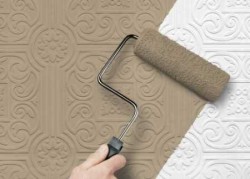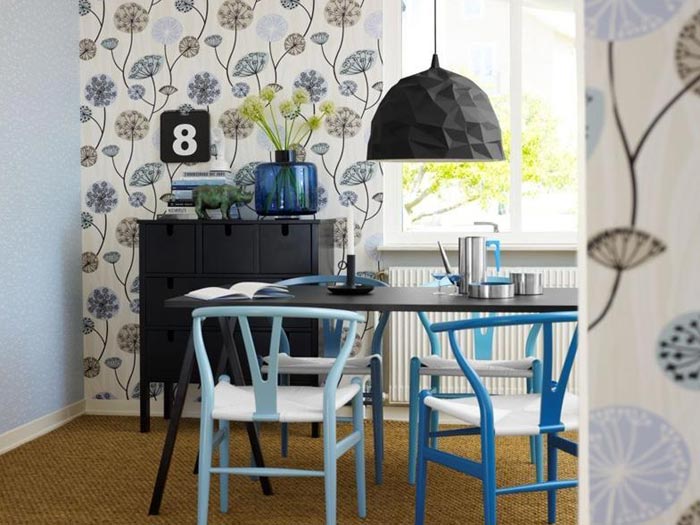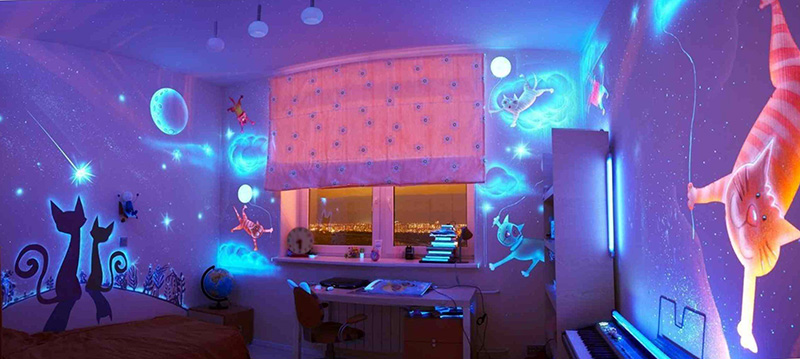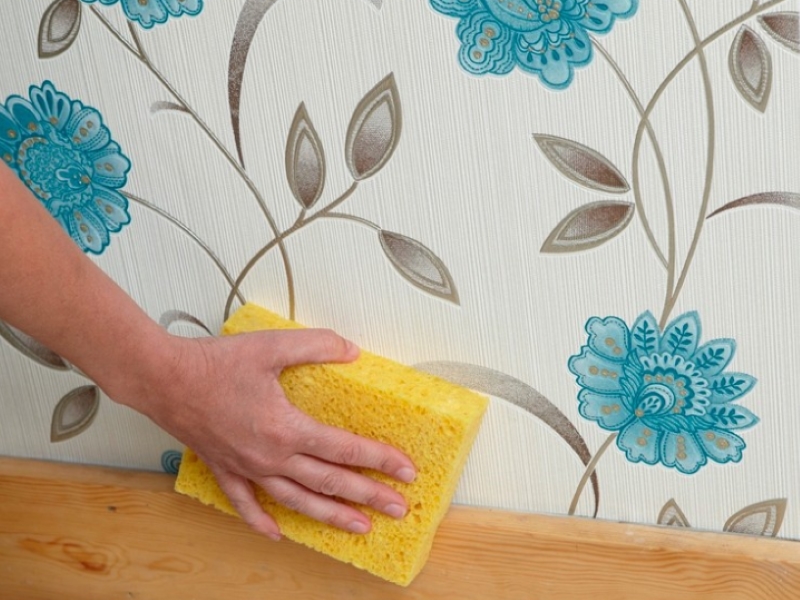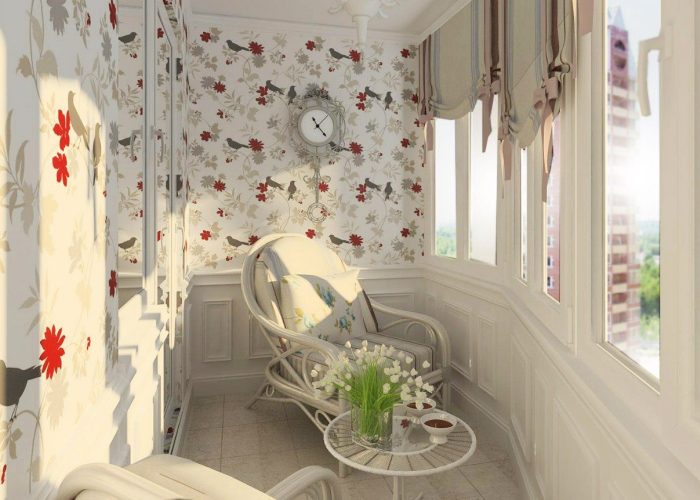Wallpaper for painting: types and techniques of painting
Wallpaper for painting is a great way to organize the interior of your apartment, especially if you like frequent changes, and do makeovers and spend money - not really. Only once having glued such wallpaper, then they can be repainted several times in the desired color, while no putty, smoothing or other surface treatments are needed. By the way, if there are children in the family who can stain a piece of wallpaper or paint them, then this is not a problem - you can quickly tint a defect.
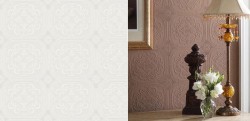 One more obvious plus of such wallpapers is that they cost less than everyone else, and if you are able to do the gluing and painting yourself, then for a fairly low price there is a chance to get very interesting interior.
One more obvious plus of such wallpapers is that they cost less than everyone else, and if you are able to do the gluing and painting yourself, then for a fairly low price there is a chance to get very interesting interior.
However, not all wallpapers are suitable for painting, and even more so for reusable repainting. Only those that have a well-embossed surface, have a certain level of moisture resistance and do not contain any bright pattern are suitable. That is why it is worth stopping at that moment, what kind of wallpaper is suitable for painting.
The main types of wallpaper for painting
Despite the above requirements, among the wallpapers for painting, several types are distinguished - depending on the basis. Mostly paper ones, non-woven wallpaper and cullet. Now more about each of them.
Paper wallpaper for painting
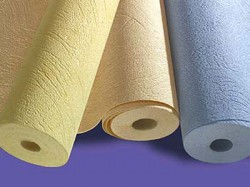 Paper wallpaper, as a rule, consist of two layers of paper, as a result, a rather dense and thick material with a certain relief pattern is obtained. In order for such wallpapers to be repainted several times, special water-repellents are used in their manufacture, which allows them to maintain their structure after several stains. It is worth noting that such wallpapers well hide minor wall defects, and can also be used to decorate ceilings.
Paper wallpaper, as a rule, consist of two layers of paper, as a result, a rather dense and thick material with a certain relief pattern is obtained. In order for such wallpapers to be repainted several times, special water-repellents are used in their manufacture, which allows them to maintain their structure after several stains. It is worth noting that such wallpapers well hide minor wall defects, and can also be used to decorate ceilings.
Such wallpapers are produced, as a rule, in white. Occasionally, light pastel shades may occur.
Non-woven wallpaper for painting
This is probably one of the most successful finishing materials in general and among wallpaper for painting in particular. They consist of two layers: this is non-woven and vinyl spraying, which models the relief. And since both of these materials are quite fragile and eventually, for example, vinyl can sprinkle, so such wallpaper is not just what you can, but need to be treated with paint. And you can do this about 10-15 times, i.e. try a huge number of colors for your room.
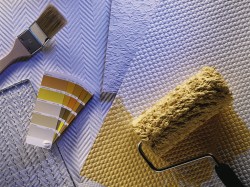 One of the advantages of such wallpapers is the relative simplicity of sticking them, since this is the material that requires the application of glue on the wall, and not on the wallpaper. Therefore, it will not be necessary to prepare a lot of space for spreading the wallpaper, wait until the glue is absorbed a little - the process is simplified. And after gluing, non-woven wallpaper shows itself as a "tough nut" - they do not swell, rarely deform and do not shrink.
One of the advantages of such wallpapers is the relative simplicity of sticking them, since this is the material that requires the application of glue on the wall, and not on the wallpaper. Therefore, it will not be necessary to prepare a lot of space for spreading the wallpaper, wait until the glue is absorbed a little - the process is simplified. And after gluing, non-woven wallpaper shows itself as a "tough nut" - they do not swell, rarely deform and do not shrink.
Non-woven wallpaper, like paper, can be produced in white or in color: and if only the first option was distributed earlier, now many manufacturers produce a huge number of already painted non-woven wallpapers. In any case, they are great for walls and ceilings, and even more so than paper, they can hide flaws.They are recommended to be used even in new buildings, since there the walls shrink, and this wallpaper will not only hide the crack, but can also keep it from further spreading.
All these advantages should also be supplemented with good environmental indicators: they do not contain harmful substances, do not affect health and are able to “breathe”.
Cullets for painting
Cullets are a special type of material that is made from a mixture of soda, sand, lime and dolomite. All this actually forms glass, from which the fibers of the glass are pulled. As you know, glass is not afraid of fire, so that glass has a high degree of fire safety. And since they have much in common with fiberglass and cobwebs, the effect of strengthening the surface is visible, as well as masking small cracks.
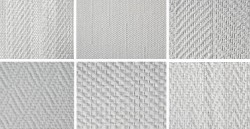 Cullets can be two-layer, i.e. have a paper backing, or single layer. In any case, they have a characteristic relief surface with a specific pattern or pattern. Moreover, such wallpapers can be repainted up to 12 times, if there are more layers of paint, that is, there is a risk that the relief will simply be lost.
Cullets can be two-layer, i.e. have a paper backing, or single layer. In any case, they have a characteristic relief surface with a specific pattern or pattern. Moreover, such wallpapers can be repainted up to 12 times, if there are more layers of paint, that is, there is a risk that the relief will simply be lost.
In addition to the ability to often change the appearance of the room, these wallpapers are also characterized by high wear-resistant properties, they can be washedeven use a brush. All this makes it possible to use them in rooms where a large number of people pass per day, as well as in more relaxed rooms.
A nice feature - cullet rolls usually exceed standard parameters, so you can reduce the number of scraps and reduce the number of joints.
Paint application
Paint on the wallpaper is applied after they are glued and well dried. Depending on the wallpaper chosen, a different type of paint is used. Next, we consider these nuances.
Necessary tools and materials
- fur roller for applying paint;
- a brush for creating drawings from paint, but this will only be possible if you have chosen a wallpaper with a smooth surface;
- plastic bath
 chka;
chka; - water-based paint of the right shade for paper and non-woven wallpaper;
- latex or acrylic paint for glass;
- containers for paint dilution;
- color;
- acrylic varnish if necessary.
Depending on what type of paint you have chosen, you can talk about whether your wallpaper will be washed or not. You can also choose between a matte and glossy type of surface: matte is especially suitable if the surface is not completely even, then minor defects will not be visible. And glossy paint perfectly emphasizes the relief of the wallpaper.
Training
So describe Wallpapering process we will not, we will immediately begin to prepare the paint for application. After the wallpaper is pasted, enough time should pass before it dries.
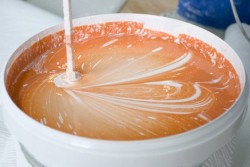 With the choice of paint you need to be extremely cautious: for example, for non-woven wallpaper, you should never use oil paint, it is better to use water based paint, and for glass wallpaper you can use latex.
With the choice of paint you need to be extremely cautious: for example, for non-woven wallpaper, you should never use oil paint, it is better to use water based paint, and for glass wallpaper you can use latex.
As for the color, you can choose a ready-made shade, because there are many of them in the store - for every taste. But if you don’t look for hunting for a long time, or if you still haven’t found the right color, then you can crank up a simple trick with water-based paint: add color to white paint with tinting tables. Such a service can be provided to you at a hardware store, but in order to save a little, you can do everything yourself, because it’s not difficult. Add a color to a small amount of paint and mix well, try the resulting shade on the most inconspicuous part of the wall, and if everything suits, then you can add all this to the rest of the paint. Keep in mind that if you apply the paint in several layers, the shade will become more saturated.
Painting
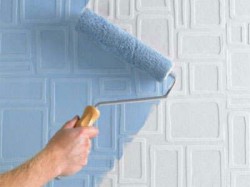 In the painting itself there is nothing complicated. You will need a roller with a bath - this will remove all excess paint, and a brush.The walls are painted from top to bottom with a roller: they are reinsured so that excess paint does not run off and does not spoil the appearance. A brush is needed for painting hard-to-reach spots. It can also be used to create some kind of drawings.
In the painting itself there is nothing complicated. You will need a roller with a bath - this will remove all excess paint, and a brush.The walls are painted from top to bottom with a roller: they are reinsured so that excess paint does not run off and does not spoil the appearance. A brush is needed for painting hard-to-reach spots. It can also be used to create some kind of drawings.
Paint on new wallpaper is best applied in 2-3 layers, since not all paints evenly lay down. If you are re-staining, then most likely you will need one coat of paint.
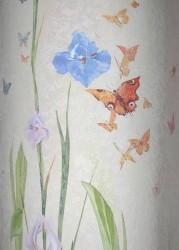 By the way, some do slightly different with non-woven wallpaper: they brightly paint the wall, and only then white wallpapers are glued. As a result, the non-woven fabric skips that color, only it turns out to be softer, and the effect itself is quite interesting. True, this can already be called wallpaper with a stretch.
By the way, some do slightly different with non-woven wallpaper: they brightly paint the wall, and only then white wallpapers are glued. As a result, the non-woven fabric skips that color, only it turns out to be softer, and the effect itself is quite interesting. True, this can already be called wallpaper with a stretch.
You can also use this method of painting on non-woven wallpaper: after the paint layer is applied, a lightly rag is applied over it, as a result of which the paint is erased from the volumetric elements. Then they can be applied with a slightly different shade of paint, making the pattern voluminous.
Well, if you have a talent and desire for drawing, then in the room you can create unique walls in general by drawing some kind of picture on them or simply repeating the same simple drawing or pattern.
Varnishing
If desired, the finished surface can be varnished: this is optional, but very preferable for such rooms as a kitchen, hallway, children's room, i.e. where there is an increased risk of pollution. If you put such a layer of protection on the walls, then small spots can then be removed with a slightly damp cloth. True, here more massive pollution still have to paint over.
It is better to choose acrylic colorless varnish, but it will be matte or glossy - this is at your discretion. It is easy to apply: just like for paint, a roller is used, and in more difficult places a brush is used. At the same time, one layer of varnish is practically not visible externally, but two already give good protection, but even matte varnish can give a shine to the photo.
Finally
Wallpaper for painting will significantly save your time and effort, as well as material costs for subsequent repairs. After all, it will be enough just to apply a new coat of paint, and this is not difficult at all. The only thing you need to immediately decide on the relief pattern, so that it is as suitable as possible for any type of interior, because it is not known what exactly the owners will want after 5 years.

